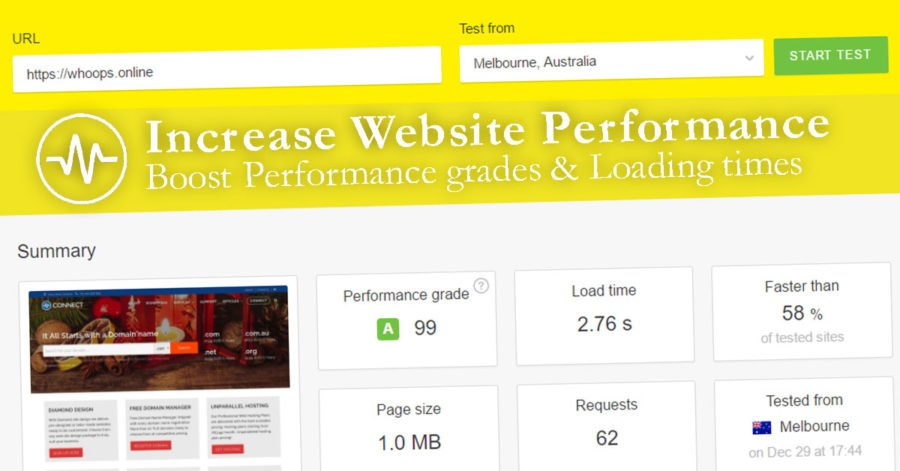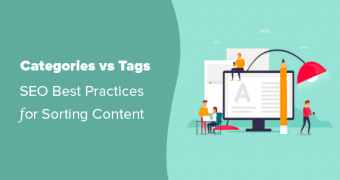Does your site have the text “Just another WordPress site” in the header or title…
Optimising Website Performance – Increasing SEO Ratings

In December 2016 we have increased performance grades on all our servers – Unlimited Plans, Cloud Hosting Plans, Starter and Business Hosting, WordPress Hosting – reaching between 89% to 99% loading times with a goal to reach from 90% to 99% on all our client’s sites. All Connect hosting plans are managed to provide a state-of-the-art performance grades by allowing websites to use all dedicated resources available. All higher SSD hosting plans, Monthly Support Plans and Performance Boosting Plans include site loading optimisations that positively affect your website’s loading times, manage resource delivery, minimise and optimise code, include compression, secure connection and encrypted connection. Free SSL delivered with every hosting plan. Managed WordPress Hosting plans available.
Nobody Likes a Slow Website
For this test we used Pingdom Website Speed Test Tool – Pingdom Website Speed Test was build to help analyze the load speed of websites and learn how to make them faster. It lets you identify what about a web page is fast, slow, too big, what best practices you’re not following, and so on. We have tried to make it useful both to experts and novices alike.
In short, we wanted it to be a easy-to-use tool to help webmasters and web developers everywhere optimize the performance of their websites.
For the latest reading on whoops.online performance grade click HERE. (View Pingdom Website Speed Test)
What is Page Speed?
Page speed is often confused with “site speed,” which is actually the page speed for a sample of page views on a site. Page speed can be described in either “page load time” (the time it takes to fully display the content on a specific page) or “time to first byte” (how long it takes for your browser to receive the first byte of information from the web server).
No matter how you measure it, a faster page speed is better. Many people have found that faster pages both rank and convert better.
SEO Best Practices
Google uses a multitude of factors to determine how to rank search engine results. Typically, these factors are either related to the content of a webpage itself (the text, its URL, the titles and headers, etc.) or were measurements of the authenticity of the website itself (age of the domain name, number and quality of inbound links, etc.). However, in 2010, Google did something very different. In 2010 Google announced website speed would begin having an impact on search ranking. Now, the speed at which someone could view the content from a search result would be a factor.
Google has indicated site speed (and as a result, page speed) is one of the signals used by its algorithm to rank pages. And research has shown that Google might be specifically measuring time to first byte as when it considers page speed. In addition, a slow page speed means that search engines can crawl fewer pages using their allocated crawl budget, and this could negatively affect your indexation.
Websites with servers and back-end infrastructure that could quickly deliver web content had a higher search ranking than those that were slower. This means that, despite conventional wisdom, it is back-end website performance and not front-end website performance that directly impacts a website’s search engine ranking.
Page speed is also important to user experience. Pages with a longer load time tend to have higher bounce rates and lower average time on page. Longer load times have also been shown to negatively affect conversions.
Some of the ways we increase your page speed at Connect 2u2 Hosting:
Enable GZIP compression (Monthly Support or Optimise WordPress Plans)
Using Gzip compression, a software application for file compression, to reduce the size of your CSS, HTML, and JavaScript files that are larger than 150 bytes.
Minifying CSS, JavaScript, and HTML
By optimizing your code (including removing spaces, commas, and other unnecessary characters), we can dramatically increase your page speed. Also removing code comments, formatting, and unused code. Google recommends using YUI Compressor for both CSS and JavaScript. All these are included with Monthly Support Plans or with Optimise WordPress Site as an Add-on (Available to all Connect clients).
Leveraging browser caching
Browsers cache a lot of information (stylesheets, images, JavaScript files, and more) so that when a visitor comes back to your site, the browser doesn’t have to reload the entire page. By using a tool like YSlow (and caching protocols) we can determine if you already have an expiration date set for your cache. Then setting your “expires” header for optimised time-frame you want that information to be cached. In many cases, unless your site design changes frequently, one year is a reasonable time period. Google has more information about leveraging caching HERE.
Using a content distribution network (depends mostly on site’s localisation)
Content distribution networks (CDNs), also called content delivery networks, are networks of servers that are used to distribute the load of delivering content. Essentially, copies of your site are stored at multiple, geographically diverse data centers so that users have faster and more reliable access to your site. By default we’re providing a Cloudflare CDN with all our Hosting Plans – Free to use (in basic, free version), providing its own SSL support, caching, CDN network. All Connect Cloud Hosting Unlimited Plans, Starter and Business Hosting Plans and Managed WordPress include a CloudflareCDN (free plans).
Optimizing images and resources
Making sure that your images are no larger than they need to be, that they are in the right file format (PNGs are generally better for graphics with fewer than 16 colors while JPEGs are generally better for photographs) and that they are compressed for the web. With Monthly Support Plans we provide an excellent image optimisation service with detailed instructions on how to prepare images for your online business, how to optimise images and enable image optimisation protocols by default in all your Managed WordPress Hosting sites – so all images are compressed and optimised while uploaded.
Optimise your WordPress site – Connect Managed WordPress Hosting (or see below)
- Sale
%22%20transform%3D%22translate(1.8%201.8)%20scale(3.63281)%22%20fill-opacity%3D%22.5%22%3E%3Cpath%20fill%3D%22%23c2ffee%22%20d%3D%22M204.4%20130.6l1.2%2072-158%202.8-1.2-72z%22%2F%3E%3Cellipse%20fill%3D%22%23c4ffef%22%20cx%3D%22122%22%20cy%3D%2272%22%20rx%3D%2283%22%20ry%3D%2235%22%2F%3E%3Cellipse%20fill%3D%22%23beffea%22%20cx%3D%2265%22%20cy%3D%22126%22%20rx%3D%2235%22%20ry%3D%2256%22%2F%3E%3Cellipse%20fill%3D%22%2388ccb5%22%20rx%3D%221%22%20ry%3D%221%22%20transform%3D%22matrix(51.92988%20-137.38378%2059.61857%2022.5353%20255%20209.3)%22%2F%3E%3C%2Fg%3E%3C%2Fsvg%3E) Select options This product has multiple variants. The options may be chosen on the product page
Select options This product has multiple variants. The options may be chosen on the product pageConnect WordPress Maintenance Plans
$99.00 – $224.00




